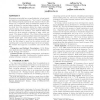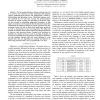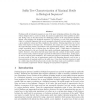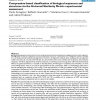932 search results - page 11 / 187 » Sequence Complexity for Biological Sequence Analysis |
118
click to vote
CIKM
2004
Springer
15 years 5 months ago
2004
Springer
Biosequences typically have a small alphabet, a long length, and patterns containing gaps (i.e., “don’t care”) of arbitrary size. Mining frequent patterns in such sequences ...
86
Voted
ICDE
2010
IEEE
15 years 7 months ago
2010
IEEE
— The increasing infectious disease outbreaks has led to a need for new research to better understand the disease’s origins, epidemiological features and pathogenicity caused b...
108
Voted
BMCBI
2008
15 years 18 days ago
2008
Background: Current sequencing technologies give access to sequence information for genomes and metagenomes at a tremendous speed. Subsequent data processing is mainly performed b...
105
click to vote
BIRD
2008
Springer
15 years 2 months ago
2008
Springer
Finding motifs in biological sequences is one of the most intriguing problems for string algorithms designers due to, on the one hand, the numerous applications of this problem in...
BMCBI
2007
15 years 18 days ago
2007
Background: Similarity of sequences is a key mathematical notion for Classification and Phylogenetic studies in Biology. It is currently primarily handled using alignments. Howeve...




